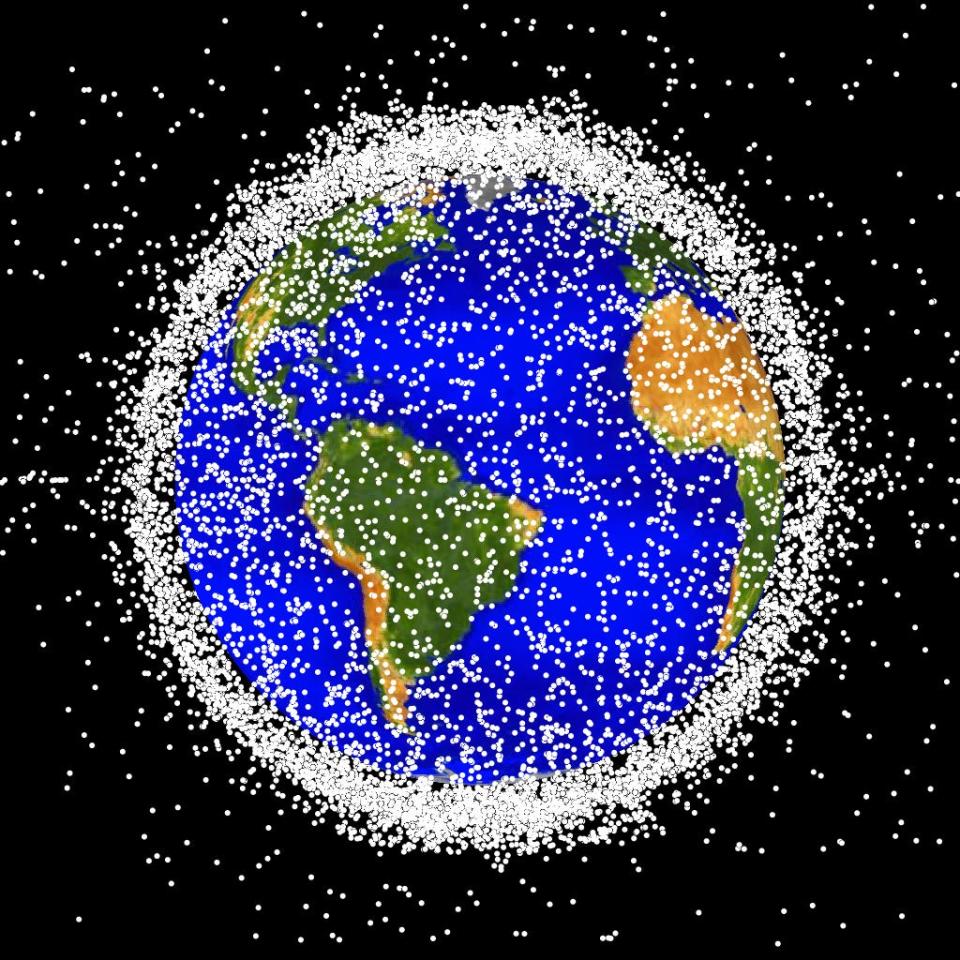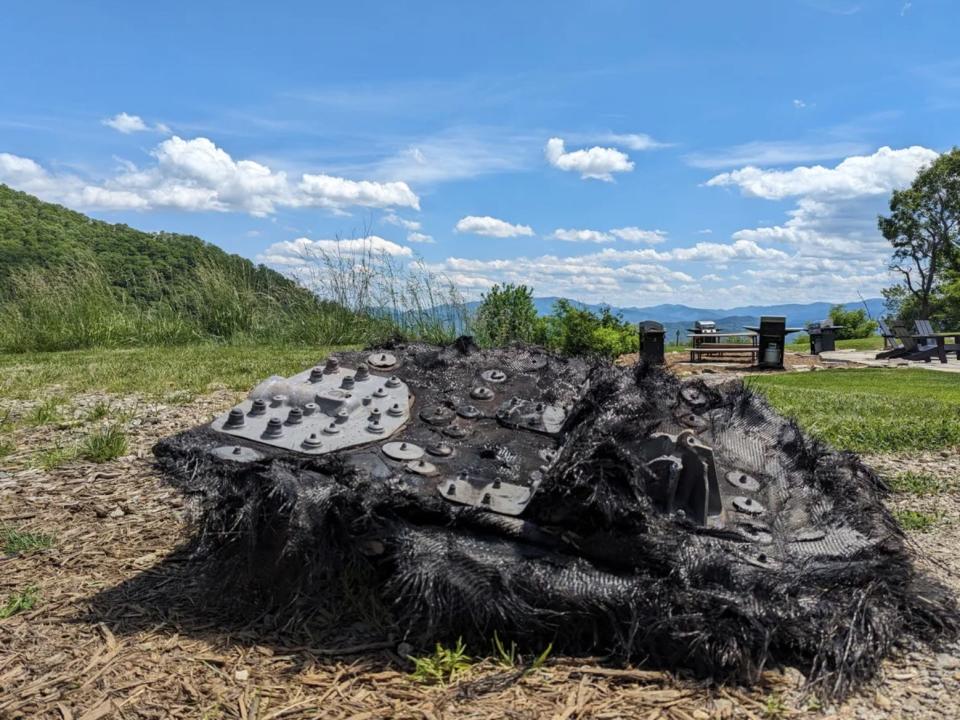-
In May, a large piece of space debris crashed into the mountains of North Carolina.
-
After investigating the incident, NASA confirmed that the incident originated from a SpaceX Dragon Capsule.
-
This and other accidents show how difficult it is to reduce the risk of falling debris reaching Earth.
NASA has confirmed that a piece of space junk the size of a car engine found in North Carolina came from a SpaceX Dragon Capsule, according to a statement from the agency shared on X.
The Dragon Capsule is a reusable spacecraft that carries astronauts and cargo to and from the International Space Station. However, a portion of it, called the trunk, is not reusable and is discarded just before the capsule returns to Earth.
That log is what ultimately crash-landed on a trail at a mountaintop resort just outside Asheville in May. “It was just wild. It looked crazy,” Justin Clontz, a groundskeeper who came across the large debris, told Space.com.
No one was injured in the impact. But the space junk shouldn’t have been there in the first place. NASA said in its statement that evaluations of Dragon’s original design showed it would completely disintegrate in Earth’s atmosphere. That’s not what happens every time, though.

A similar piece of Dragon trunk was found in June in Franklin, North Carolina. And another piece landed in a farmer’s field in Saskatchewan, Canada, in April.
It’s not just SpaceX junk that’s falling to Earth. A two-pound piece of debris, slightly smaller than a soda can, fell from the International Space Station in March and crashed through a Florida family’s roof. The family is now suing NASA over the incident.
This series of recent accidents underscores how difficult it can be to predict and model when space debris will or will not burn up in Earth’s atmosphere. Improving these models is more important than ever.
People are launching more spaceships than ever before


Space junk has been falling from the sky since the 1960s, but humans are launching more stuff into space than ever before. According to the site “Our World in Data,” a record 2,664 objects, including satellites, spacecraft, landers and more, were sent to or beyond Earth’s orbit in 2023.
“Once these things die, they’re just left behind. It’s like orbiting garbage. And then it’s up to Mother Nature to figure out how to get the thing back,” Moriba Jah, an associate professor of aerospace engineering and engineering mechanics at the University of Texas at Austin, told BI.
Jah refers to uncontrolled reentry. It is when space debris falls in free fall towards Earth without anyone controlling its course.
Modeling uncontrolled re-entry has a lot of uncertainty and is therefore more complex than modeling controlled re-entry, which typically involves rockets that control the trajectory of the debris and ensure that it lands in a safe place, such as the ocean.


“With uncontrolled things, everything is ruled out, because you don’t necessarily know what the orientation of the object is when it hits the atmosphere, or how it’s tumbling,” Jah said, who collaborates with ServicePlan Innovation on Space Trash Signs to study and visualize the effects of space pollution.
Uncontrolled reentry usually occurs with smaller pieces of space debris that disintegrate in the atmosphere before ever reaching the ground, such as the trunk of the Dragon Capsule.
Although this space debris is relatively small compared to, say, car-sized satellites, it is not without danger. They travel at thousands of kilometers per hour before impact.
If the piece of debris that crashed just outside Asheville, North Carolina, in May had landed on a person, that person would certainly have died, Jonathan McDowell, an astrophysicist at the Harvard and Smithsonian Center for Astrophysics and a leading expert on space debris, told BI.


While the chances of space debris hitting a human are astronomically small, a 2022 study published in the journal Nature estimates there is about a 10% chance that one or more people will be hit within a 10-year period.
How to Reduce the Risk of Falling Space Debris
NASA wrote in its statement that it will use the debris recovered from the North Carolina mountain resort to improve its debris models.
Another option NASA should consider, McDowell said, is reducing the number of uncontrolled reentry maneuvers and using controlled de-orbit, even for small space objects.
“Then you know exactly when and where it’s going to happen,” McDowell said.
Currently, controlled reentries are relatively uncommon. About 200 to 400 objects large enough to be tracked enter Earth’s atmosphere each year, and only a handful of those are controlled reentries, according to The Aerospace Corporation.
To make controlled reentry the status quo, new laws and federal funding are needed to help NASA and companies like SpaceX clean up their mess, Jah said.
The federal government is responsible for approving space launches, but it doesn’t hold launch agencies like NASA or SpaceX responsible for safely removing objects. That needs to change, Jah added.
“Working in space always involves some uncertainty, but NASA is committed to ensuring its operations are safe for the public and strives to continually improve processes,” NASA wrote in a statement to BI.
SpaceX did not respond to BI’s request for comment.
Read the original article on Business Insider